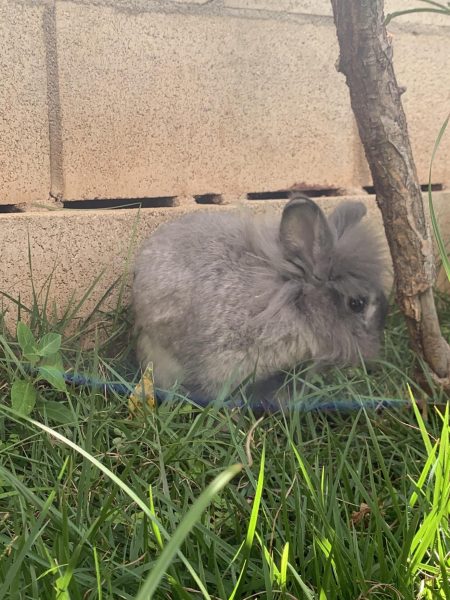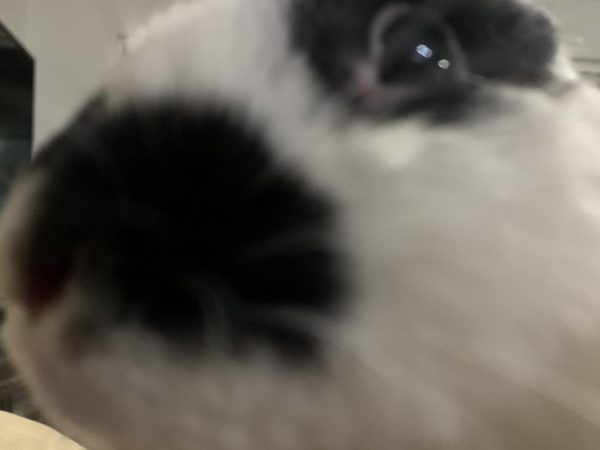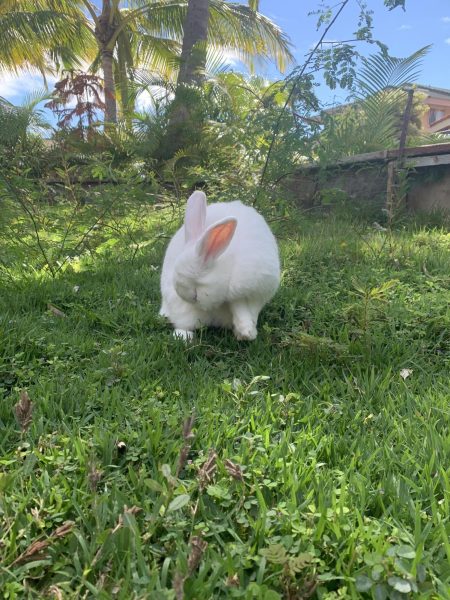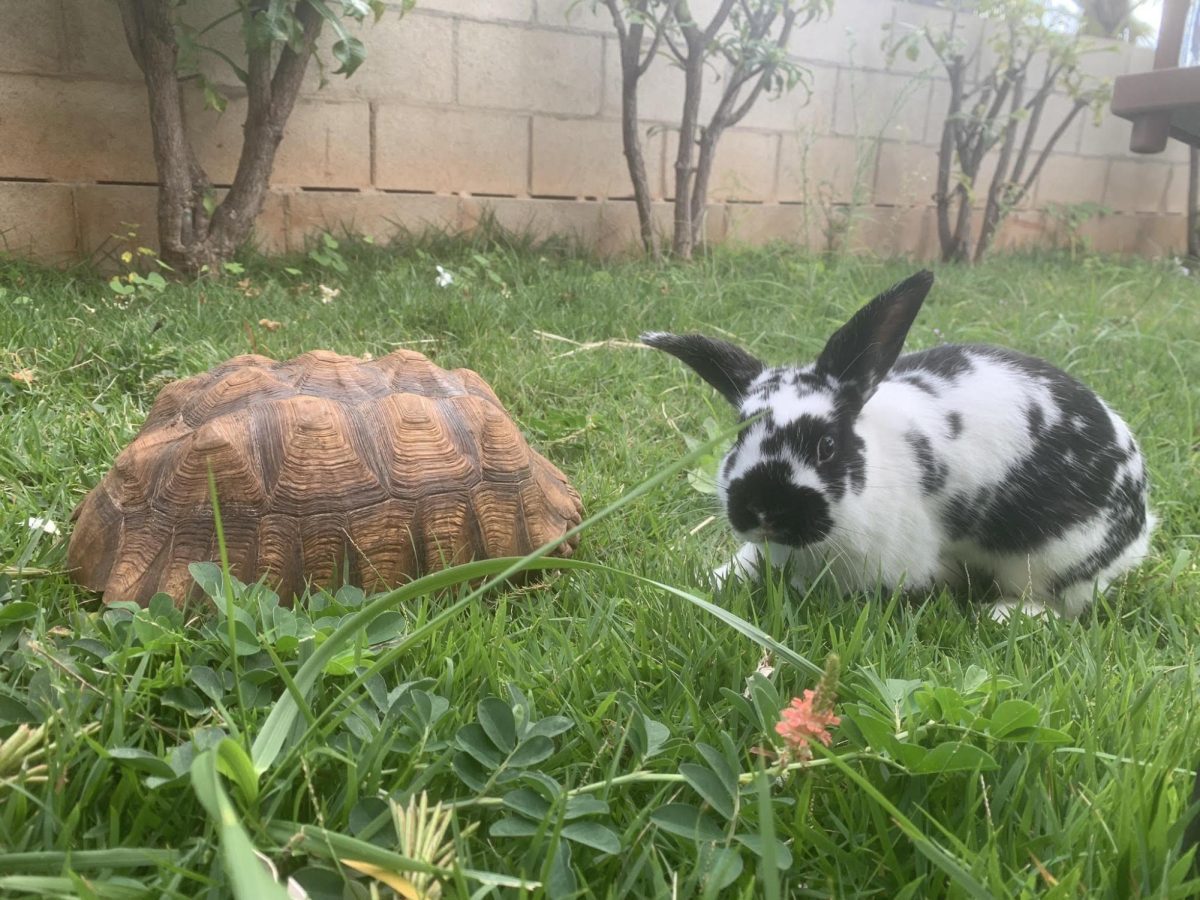At my house, it’s not uncommon to find redheads and sulcata tortoises roaming the yard and eating hibiscus flowers. Inside, tanks filled with fish as tiny as your fingertips to as long as your hands, sit next to the dinner table as my sister scarf down leftovers from the fridge. In the garage, eight rabbits are asleep or eating hay. Upstairs, one might find four more tiny redhead tortoises and leopard tortoises eating a lettuce leaf, along with five more rabbits just hanging out.

As someone with more than 30 pets and a burning passion to pursue veterinary care, I decided to write an article that discusses these not-so-common household pets and how to care for them. This article is the first in a series and will focus on my pet rabbits.
Rabbits are really smart, making them fast learners. They can pick up simple moves such as turning around, sitting and standing on their hind legs. I occasionally try to teach my rabbits how to wait patiently for their food, especially my rabbit named Smores. We nicknamed him “Aloha Bun” due to his energetic and spunky personality.

Because of their intelligence, rabbits can easily escape from their pens or cages. I’ve had my fair share of rabbits escaping. It’s been minimal after a couple of months, if not years, but some rabbits have become quite the escape artists. The most recent rabbit that escaped was named Syrup. He escaped through a kennel because he was skinny enough.
This leads to my second point about rabbits and how much space they need to roam. Rabbits are explorers and need a big space to exercise and play. Some rabbit owners give their pets the entire house floor to play, while others, like my family, provide a caged area. Rabbits need about 12 square feet ’ worth of space, according to a blog about rabbit cage sizes.
Rabbits’ diets consist of hay or grass, fruits, like apples and bananas, and vegetables, like lettuce and celery. Pellets are also part of their diet but not necessary. I, along with my family, love feeding our rabbits apples and bananas, as a treat. We also feed them a diet of pellets, hay and water. My family likes to feed our rabbits pellets every night for dinner. We also fill up their hay bags as a way of getting them ready for bed. We recently started using their pellets as a treat, along with lettuce and bananas.

These expenses can be what discourage potential rabbit owners. In addition to food, other costs include veterinary costs, food costs, cages and toys. For us, food costs about $25 to $100 per month, depending on the number of rabbits one has. My family spends about $500 worth of basic pet necessities every month. However, we have little to no veterinary costs every month.
Veterinary costs, especially for exotic animals, can range up to $250, depending on what is needed for the rabbit. My rabbit got neutered, and it cost around $50. But surgeries, X-rays and other things may cost up to $200 or more. We don’t bring in our rabbits for wellness checks as often. However, it is recommended that they get a semi-annual or annual check-up, depending on age, condition and the need for vaccines.
Though rabbits may be very expensive, they can be adorable companions. They all have their own unique personalities and can do spunky things like sprint and jump in the air. They might also “binky” which, according to Karen Macdonald’s rabbit body language blog, is a giant jump while they twist their body. They do these sorts of things when they are excited, which to many rabbit owners, are adorable.
As much as you might want to cuddle a rabbit, it is not recommended. This might cause them to freeze in fear, but some rabbits do appreciate being held, like my rabbit Caramel. He will relax in my hands with his head rocked back and his body’s tenseness released.
Be on the lookout for the next article, where I share more about my other exotic pets.

























